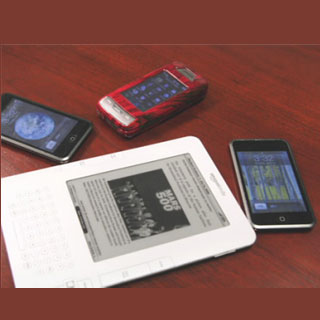 Users of smartphones, portable media players and other touchscreen devices often come across the problem of blurred and reduced visibility of the screen. A team of scientists from the American Chemical Society claim to have found out a solution to this crucial problem.
Users of smartphones, portable media players and other touchscreen devices often come across the problem of blurred and reduced visibility of the screen. A team of scientists from the American Chemical Society claim to have found out a solution to this crucial problem.
In the 238th National Meeting of the American Chemical Society, a report revealed the effect of reflection-resistant coatings and chalked out ways to improve their performance. In a new study carried out by Steven R. Carlo, Ph.D. and colleagues, the researchers reveal that consumer electronics companies seem to give more importance to appearance as compared to functionality for their flagship devices.
Carlo mentions, “Surfaces are particularly important in consumer products. This work investigates how products can be modified to reduce smudging and reflections. These modifications can offer improved resistance to fingerprints, anti-reflection properties or enhanced physical resistance.”
Nowadays, things like smudge, scratch and reflective resistant coatings have become a compulsion on high-end touchscreen mobile phones as well as MP3 players. Though these coatings are effective, they are generally poorly understood. Carlo and colleagues have hence come together to analyze the chemical composition and effectiveness of smudge and reflective materials.
The basic material used for these coatings is a compound called perfluoro alkyl ether. By adding a derivative of Teflon to ether groups the repellent effects of this compound can be greatly improved. These coatings are made from alternating layers of material such as silica and aluminum. Such materials bend and diffuse light that reduces glare and provides clear as well as uninterrupted visibility. To predict the performance of these coatings, Carlo and his team used depth profile X-ray photoelectron spectroscopy (XPS).
By measuring the differences in the refractive index (RI) of the anti-reflective coatings, the speed in which light travels through a material can be found out. It is seen that Fluorocarbons possess anti-smudge properties as they have low RI. Through XPS, the scientists could visualize the multi-layer structure and evaluate the chemical species present in each layer. Generally, the number of layers present in a coating is directly related to the anti-reflective properties.
Let’s hope that the method by Carlo and his team of applying numerous layers of silica and aluminum on the coatings of touchscreen of devices lead to better clarity along with brightness of the screen.
